On a warm day at the start of September there are swarms of butterflies and bumblebees, dragonsflies, moths, bees, and wasps that flutter and swoop through the garden. On the sunny side of the Seven Son Tree (and the caryopteris, below) there are hundreds of bumblebees, and dozens of butterflies, mostly Monarchs. I have barely a clue to the identity of the other butterflies, but I enjoy their presence, and someday I’ll get my wife to research and help me to learn one from the other.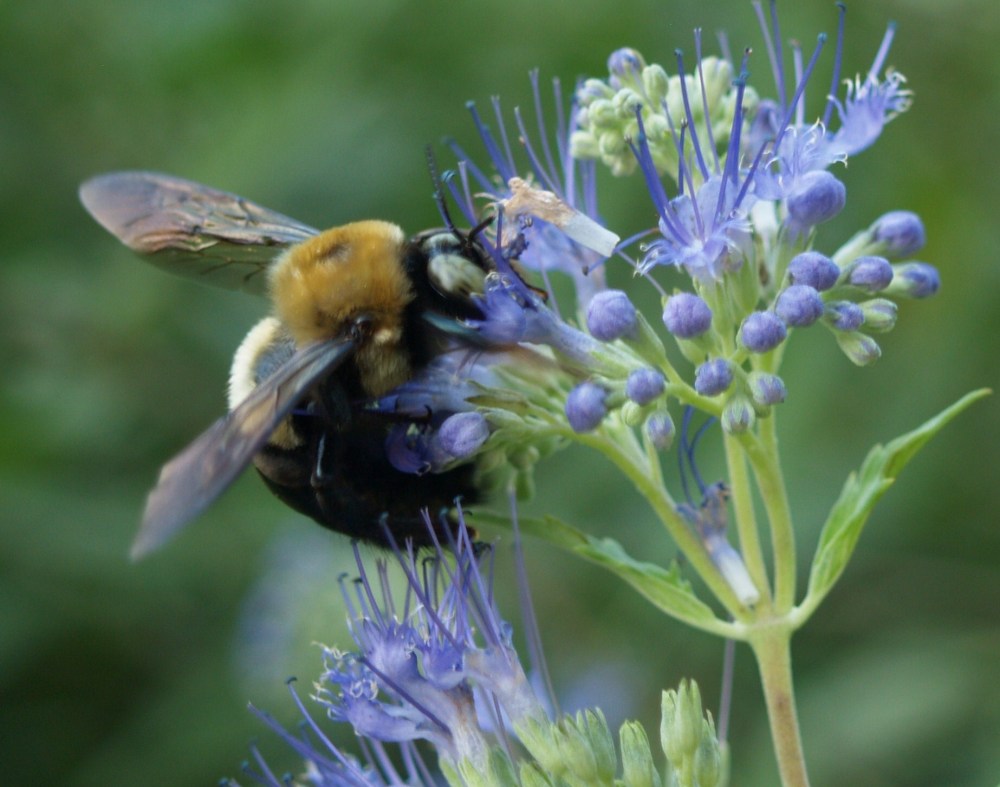
I have found that most butterflies and bumblebees are shy and flee as you draw near, though they will pay you little attention if you approach slowly. I don’t care to test the wasps and honey bees, I’ve been stung more than a few times.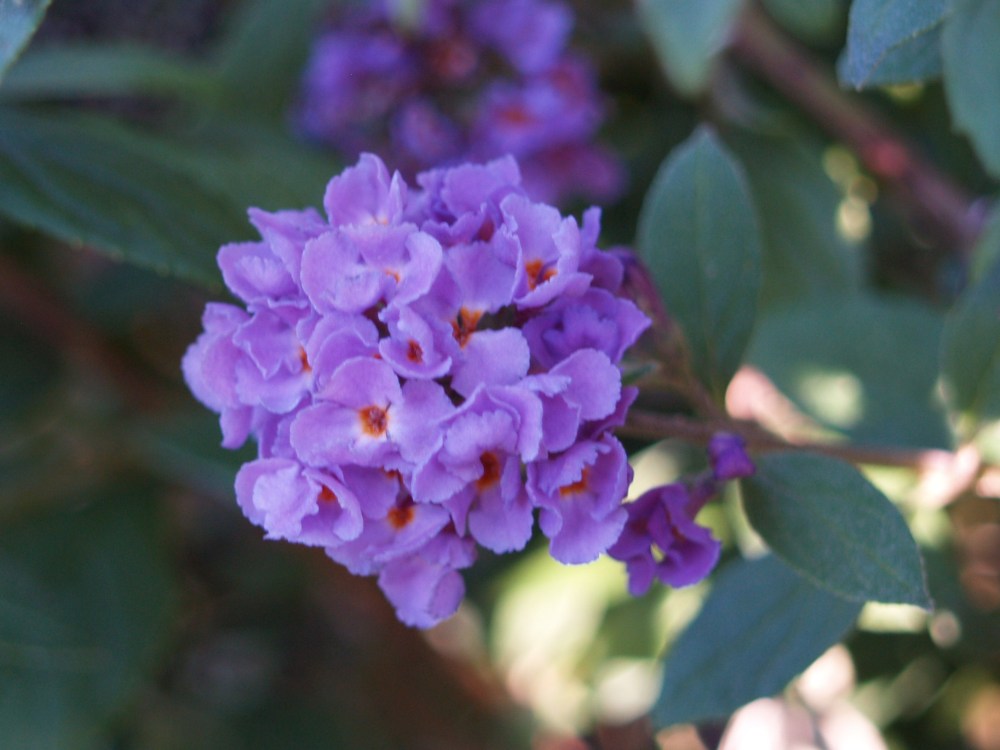
When the butterflies have had their fill of the Seven Son Tree they will move on to the nearby Franklin Tree and then to the buddleias (Buddleia ‘Blue Chip’, above). In years past I have had other large growing buddleias, but they must be cut nearly to the ground each spring, and mine were planted in soil that stayed damp, which they resented terribly and so the whole thing was a mess. Blue Chip is a more compact grower that blooms through the summer without deadheading, and is much easier to fit into the garden.
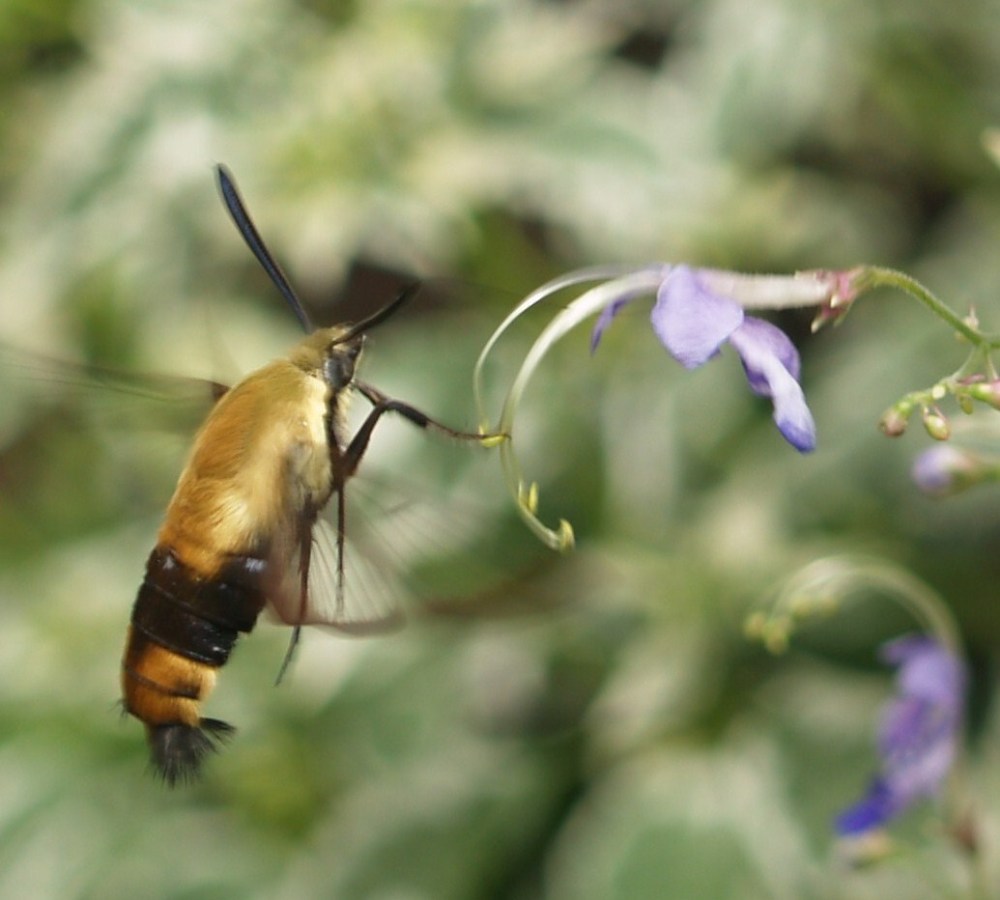
On occasion I will see a Snowberry Clearwing hummingbird moth (above) on the buddleias and lilacs, though it seems to favor the variegated Snow Fairy caryopteris (below) that is just coming into bloom. The moth looks to be a hybrid of bumblebee and hummingbird, and so is easily mistaken for one or the other. Since it is less common than butterflies or bees, and not so shy as hummingbirds, I will often drop what I’m doing at the time to follow one as it makes its way through the garden.
Other flowers in the garden are less favored by bees and butterflies, though they are pollinated in some manner not so obvious as the swarms I see. Yellow Wax Bells (Kirengeshoma palmata, below) are grown in the wooded garden as much for the large maple-like leaves as for the tubular yellow blooms that open from marble sized buds in late summer. Yesterday I stooped under the branch of the overhanging Japanese maple to see if the next bud had opened and a grasshopper bounded away, leaving a large hole in the side of the just-about-ready-to-open bud. Oh well, one less bloom to be savored, but insects will do that, so there’s no reason to get in an uproar about it.
Kirengeshoma prefers a damp spot, but I have planted wax bells where the soil is quite dry and it doesn’t seem to complain, at least not so I can hear.
I’ve had a few issues with the Japanese windflower (Anemone ‘Whirlwind’, below) and deer earlier in the summer, and they are late in budding, so of course the blooms will be delayed.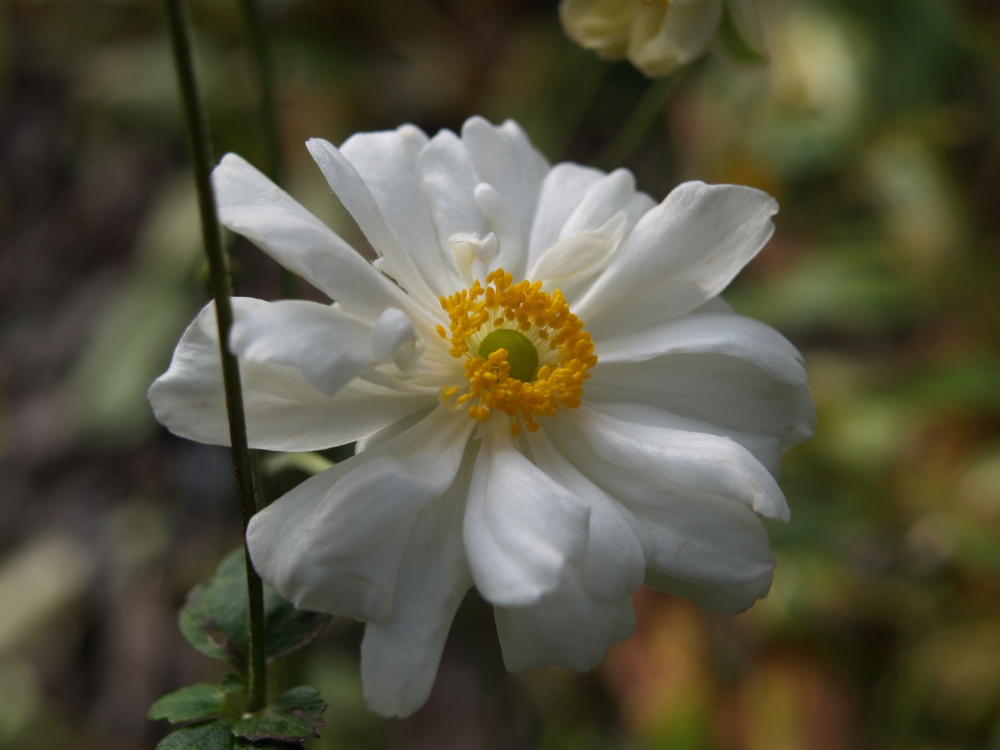
I spray a deer repellent at the start of each month, but the coneflowers and windflowers grow so quickly in early summer that I would need to spray twice in the month to protect the new growth. A couple plants have not fully recovered and will not bloom this year, I’m afraid. Most are robust and growing, heavily budded, but only a few blooms so far.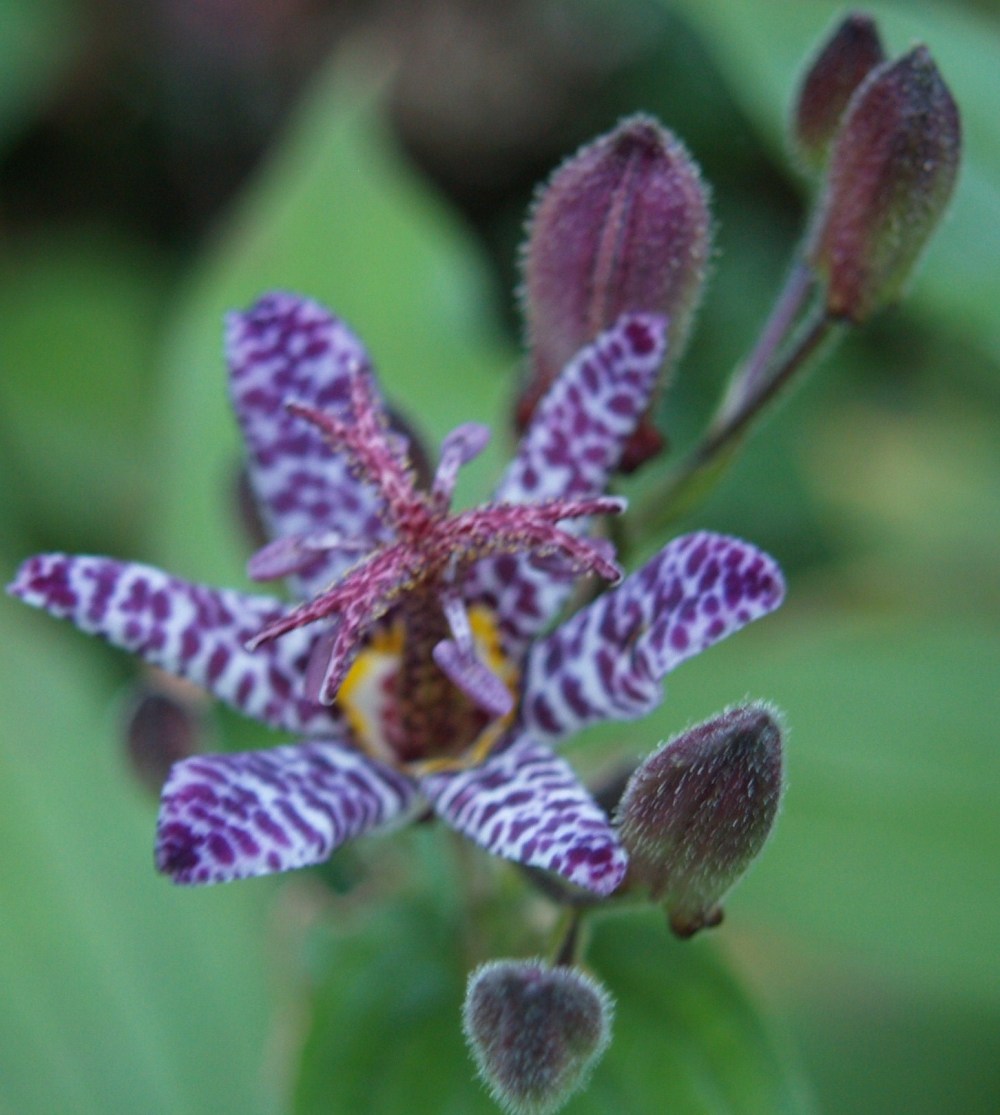
Only one of the toad lilies (Tricyrtis, above) is blooming, the others are late in budding, probably due to the extended heat, so I suppose there will be plentiful blooms in late September. Rozanne geranium (below) has been flowering steadily for more than a month, and hopefully I’ve honed in on locating them so that they survive longer than a couple years. Other perennial geraniums seem more adaptable to neighbors encroaching on their sunlight, but I’ve lost Rozanne in areas that have become more shade than sun.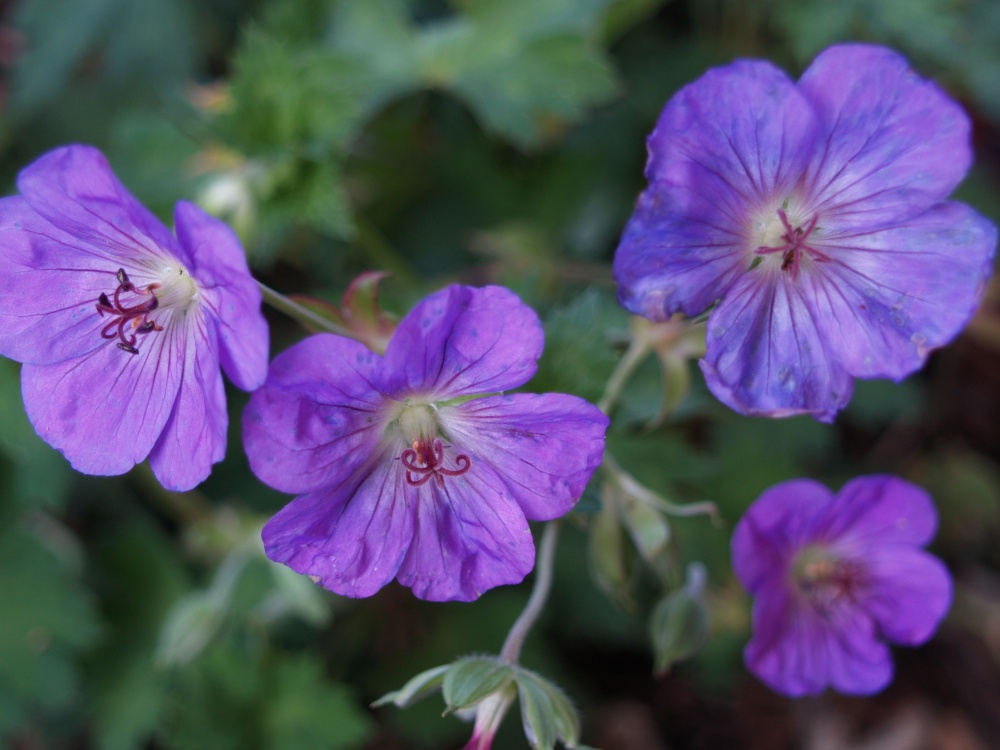
I’ve only a few tickseed in the garden, the compact growing Moonbeam (Coreopsis verticillata ‘Moonbeam’) that has been blooming since early in July, and tall coreopsis (Coreopsis tripteris ‘Lightning Flash’, below) that flops about in every direction and has suffered broken branches as deer stomp their way through the garden. Along with the toad lilies and perennial sunflowers, it has been late to bud, but is just now beginning to bloom.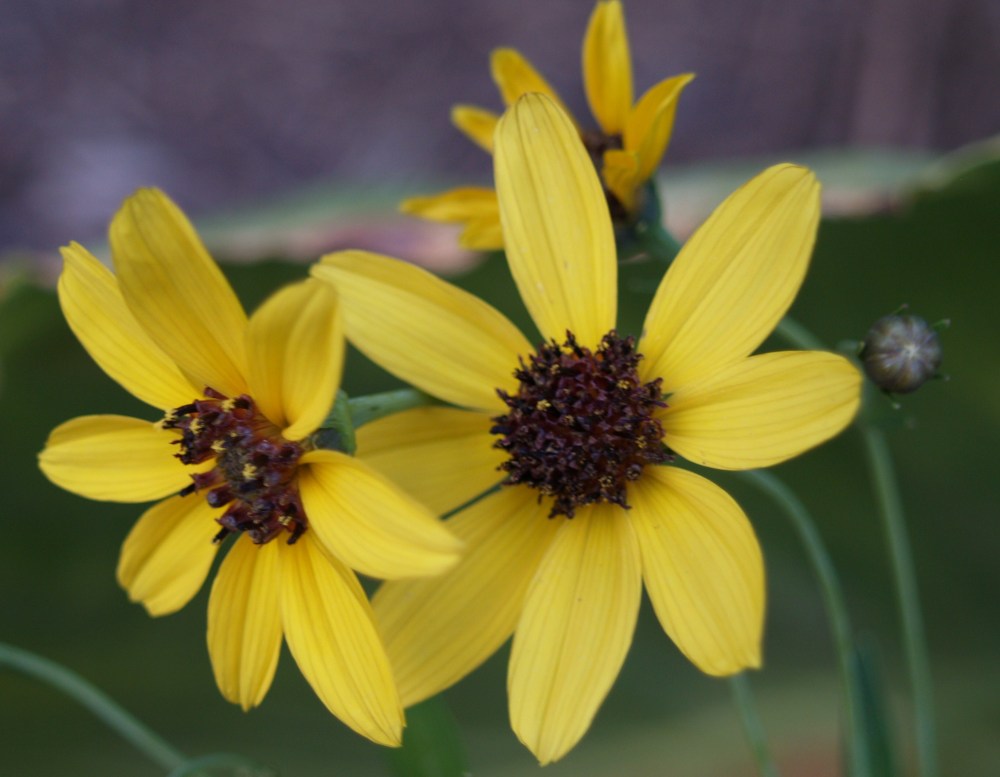
The autumn saffron (Colchicum autumnale, below) have been early this year, one blooming a few weeks ago, and a second in bloom today. The flowers would last a bit longer if the temperatures were cooler, but I don’t seem to have any say in the matter, so they should be enjoyed while they’re here.

Wonderful! Just putting my own post together at WashingtonGardener.blogspot.com on late Summer blooms when I saw yours linked in the MeadowsFarm newsletter. My toad lilies are late this year too.
Some blooms are early, others late. I can’t make any sense of this thing, so I’ll relax with my iced tea and enjoy.